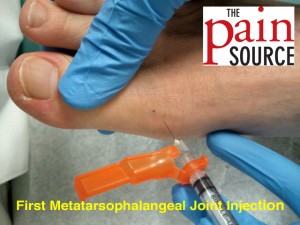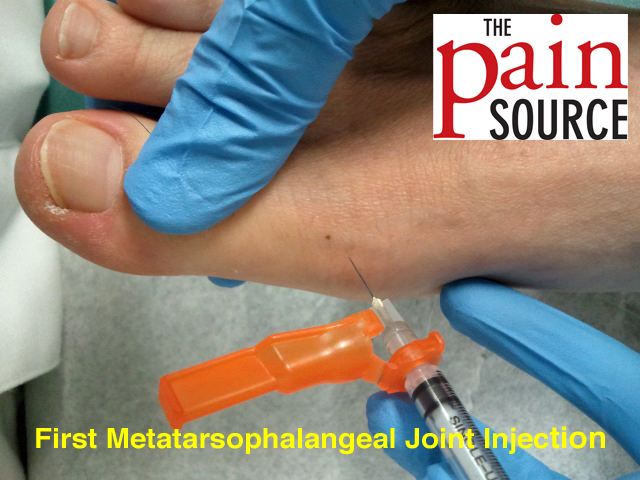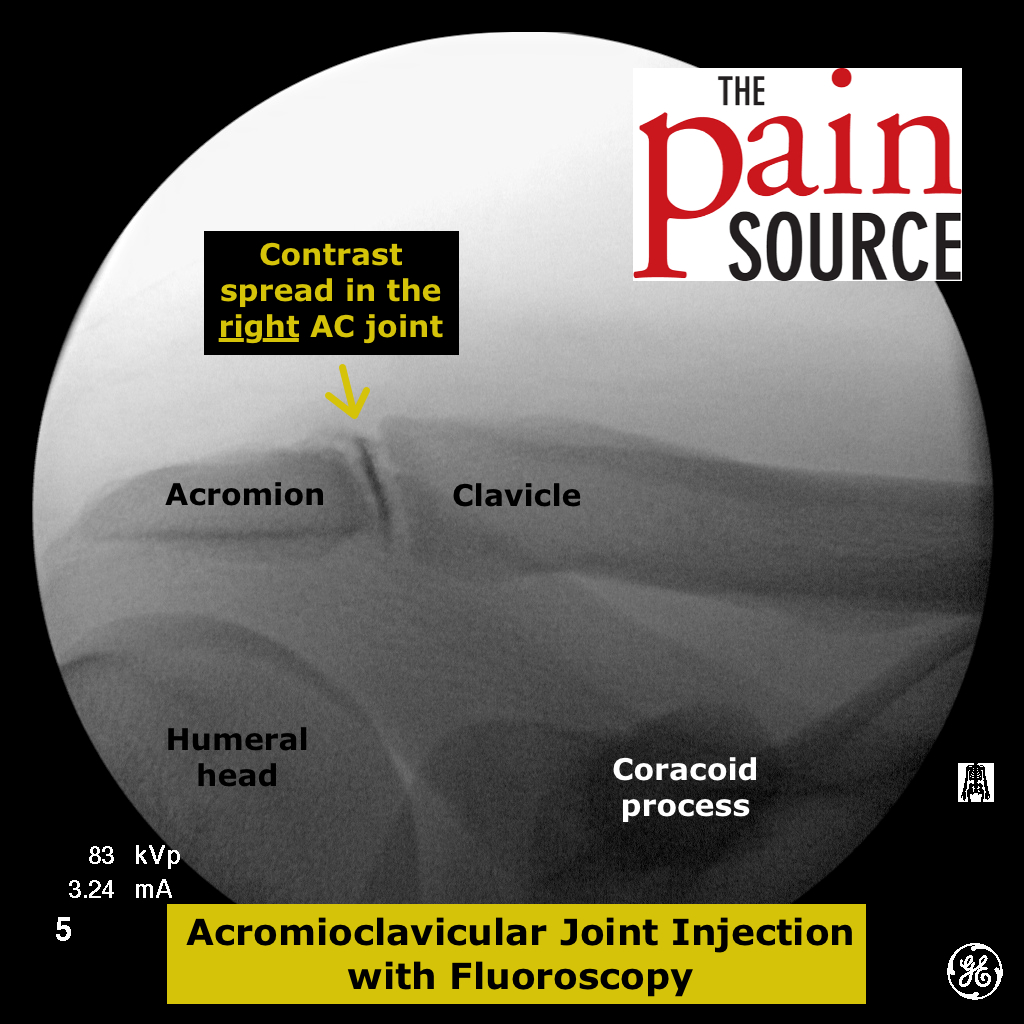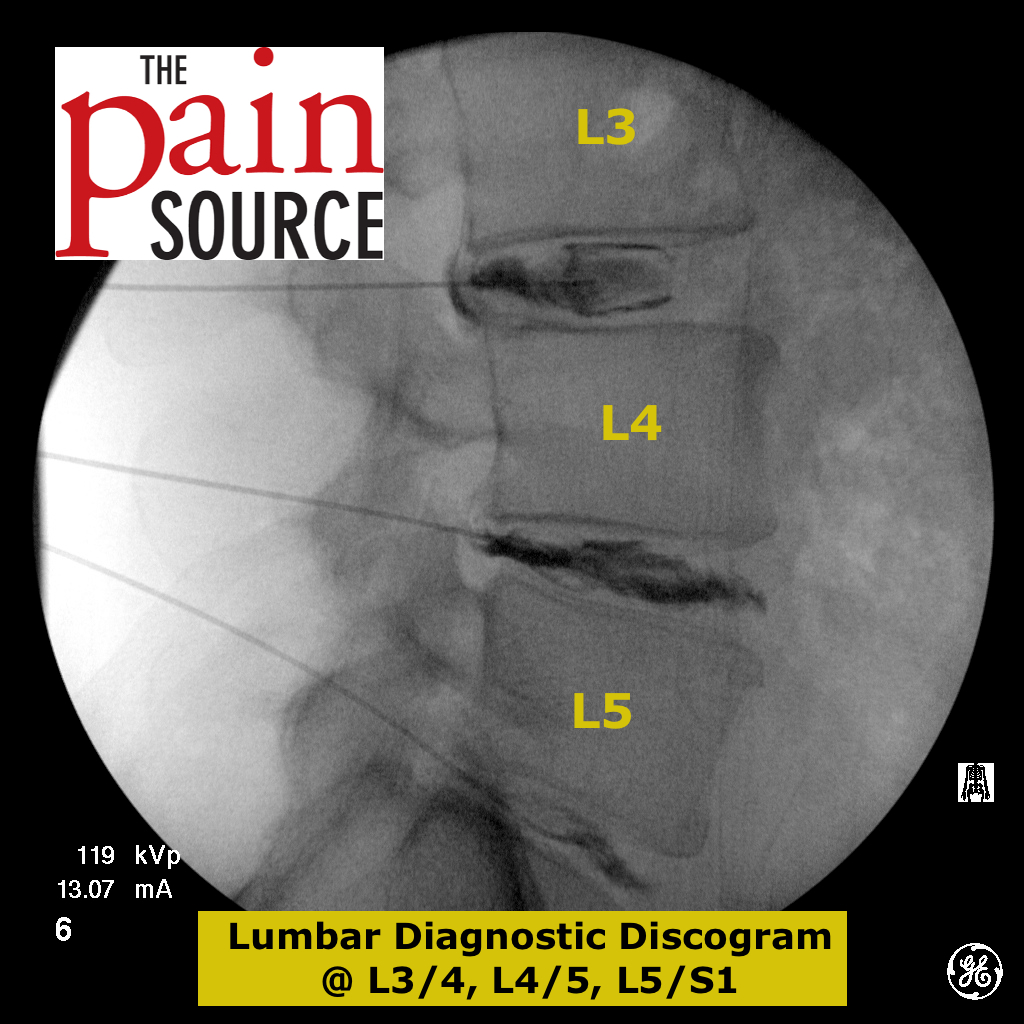By Chris Faubel, MD —

aka. “Great toe injection”, “Big toe injection”
Indications
- First metatarsophalangeal (1st MTP) joint painful osteoarthritis
- Gout (in the “great toe” joint) — most common location
- Turf Toe
- **see all ICD-9 and ICD-10 codes at end of post
CPT code: 20600 “Arthrocentesis, aspiration and/or injection; small joint or bursa (eg, fingers, toes)”
Materials Needed
- Pen – clicking type
- Gloves – non-sterile
- Alcohol swabs (or povidone-iodine)
- Band-aid
- Tuberculin needle/syringe OR 1-ml syringe with 25-gauge 5/8″ needle (depending on body habitus)
- Injectate
- 0.5-ml of 40mg/ml Depo-Medrol or Kenalog (or 0.5ml of 6mg/ml Celestone)
- 0.5-ml of 1% lidocaine
Technique / Procedure Steps
- Always start with informed consent from the patient, and then a time-out to verify correct patient and injection site.
- Mark the injection site with the pen tip in order to leave an impression in the skin.
- Clean the skin thoroughly with as many alcohol swabs as needed (usually only 1-2 are needed).
- Patient position: Perform lying supine with the foot off the end of the table, OR, supine with knee bent and foot flat on the table.
- With the tuberculin needle/syringe, enter perpendicular to the skin. If bony resistance is met, redirect the needle until you feel you are inside the joint. Note: Ultrasound may be needed if extensive osteophytes make it difficult to find an entry path. Also, the needle tip does NOT need to be inside the joint; just under the capsule surrounding the joint.
- Aspirate to make sure you’re not in any vessel.
- After negative aspiration, inject the full contents of the syringe. Should flow easily.
- Withdraw the needle after syringe if fully empty, and apply band-aid.
Tips
- Finding the injection site
- Can palpate the joint space best on the medial surface.
- May help to distract the phalanx distally to open the joint space.
- Numbing the skin
- Find out all about “Taking the Sting Out” (of injections) by going here.
- Since I use a tiny tuberculin needle, most patients have no problem with the injection and don’t need any extra lidocaine skin wheal or freezing spray.
- I tell them numbing the skin with lidocaine will probably hurt more than the actual injection.
- Because this is a sensitive area, ethyl chloride “numbing” spray may be used.
- After the injection
- Have the patient move their toe around while you throw away supplies.
- Then, re-mobilize the 1st MTP joint so they can see the immediate results of the lidocaine.
- Explain to the patient that the lidocaine will wear off in an hour or so, and that they will be back to their normal pain until the steroids start kicking in (anywhere from 1-7 days).
- May also ask the patient to not do much activity on that foot for 12-24 hours.
Diagnostic Codes
- First metatarsophalangeal (1st MTP) joint painful osteoarthritis
- ICD-9 codes:
- 715.17 “osteoarthrosis, localized, primary, ankle and foot”
- 719.47 “pain in joint, ankle and foot”
- ICD-10 codes:
- M19.071 “primary osteoarthritis, right ankle and foot”
- M19.072 “primary osteoarthritis, left ankle and foot”
- M79.674 “pain in right toe(s)
- M79.675 “pain in left toe(s)
- ICD-9 codes:
- Gout (in the big toe joint)
- ICD-9 code:
- 274.0 “gouty arthropathy”
- 274.9 “gout, unspecified”
- ICD-10 code:
- M1a.071 “idiopathic chronic gout, right ankle and foot”
- M1a.072 “idiopathic chronic gout, left ankle and foot”
- M10.071 “idiopathic gout, right ankle and foot”
- M10.072 “idiopathic gout, left ankle and foot”
- ICD-9 code:
- Sprain of first metatarsophalangeal joint (turf toe)
- ICD-9 code:
- 845.12 “sprain of metatarsophalangeal (joint) of foot”
- ICD-10 code:
- S93.5 “sprain and strain of toe(s)”
- ICD-9 code:

















TENDON WAS CUT IN THIRD TOE, I’m TOLD THERE IS NO WAY TO REPAIR THE TENDON OR EASE THE PAIN. MRI SHOWS TEAR OF THIRD TOE FLEXOR DIGITORUM TENDONS